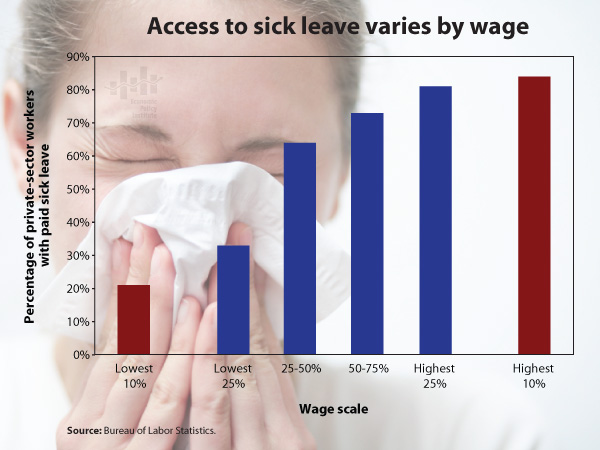Economic Snapshot for December 2, 2009
By Andrea Orr
Concerns over the rapid spread of the H1N1 flu have highlighted the fact that many American workers have no paid sick leave. U.S. employers, unlike those in many other industrialized countries, are not legally required to give workers any time off for illness, or to care for a sick family member. While some employers do provide paid sick leave, it is rarely offered to the lowest-paid workers. The Figure below shows the portion of private-sector workers in different wage groups who have paid sick leave. While 61% of all private-sector workers have some paid sick leave, only 21% of those earning wages in the bottom 10% of the wage scale have sick leave. By contrast, 81% of the highest-paid workers have some paid sick leave.

This vastly unequal access to paid sick leave poses a number of public health problems. Many of the lowest-paid jobs that are least likely to provide sick leave are service jobs in the retail, health care, and food service sectors, where workers regularly come in close contact with the general public. In addition, since low-paid workers are generally less able to afford to take time off without pay, they are more likely to go to work sick. At a time of high unemployment and diminished job security, workers may feel particularly pressured to show up on the job even if they should be tending to an illness. A bill recently introduced in Congress would guarantee five paid sick days for workers with a contagious illness who were sent home by their employers or told to stay home. Such a law would make a significant difference in containing illnesses like the flu, and also spare workers the difficult decision between going to work sick or losing a day’s pay.
